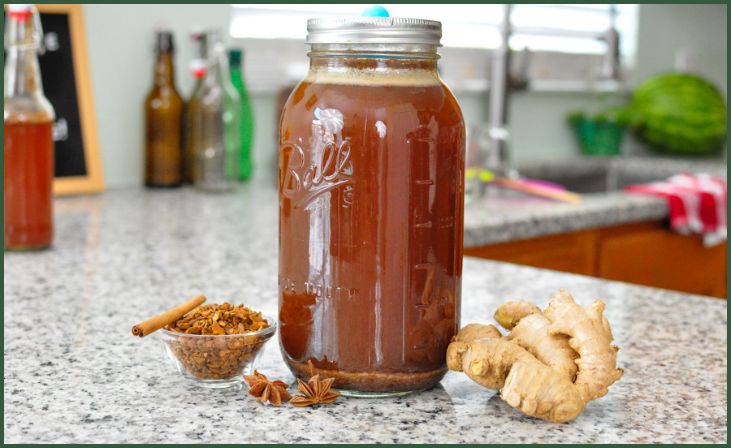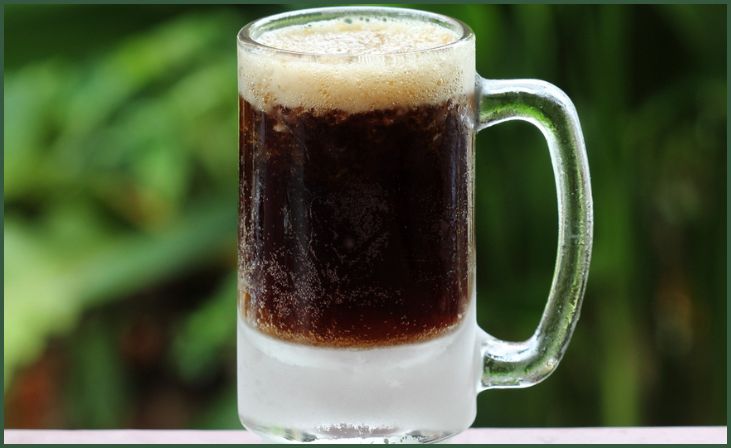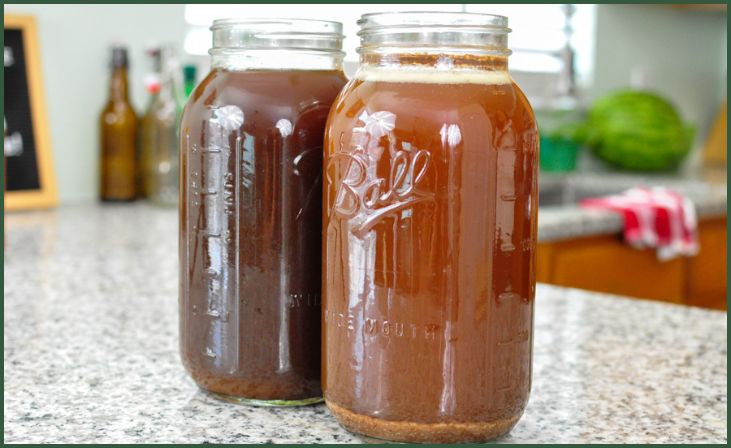Are you craving a refreshing twist on a classic beverage? Look no further than our guide on how to make traditional herbal root beer. Discover the tantalizing flavors of nature’s bounty as we delve into the art of brewing this timeless concoction. Get ready to embark on a journey of taste and tradition, as we unlock the secrets to creating a delectable and invigorating drink that will tantalize your taste buds and leave you craving more.
Table of Contents
ToggleHow to Make Traditional Herbal Root Beer

Here’s a step-by-step guide on how to make traditional herbal root beer:
Step 1: Gather the Ingredients
- 1 cup dried sassafras root
- 1/4 cup dried sarsaparilla root
- 2 tablespoons dried wintergreen leaves
- 1 tablespoon dried licorice root
- 1 tablespoon dried dandelion root
- 1 tablespoon dried burdock root
- 1 tablespoon dried ginger root
- 1 vanilla bean, split
- 1 cup granulated sugar or honey
- 1/4 teaspoon active dry yeast
- 1 gallon water
- Additional flavorings like molasses or birch bark (optional)
Step 2: Prepare the Herbs
- Crush the dried herbs and roots to release their flavors and aromas.
- Place the crushed herbs, roots, and vanilla bean in a large pot.
Also Read: Homemade Grape Soda
Step 3: Boil the Mixture
- Pour one gallon of water into the pot with the herbs and bring it to a boil.
- Once boiling, reduce the heat and let the mixture simmer for about 30 minutes to an hour, allowing the flavors to infuse into the water.
Step 4: Strain and Sweeten
- After simmering, remove the pot from the heat and strain the liquid through a fine mesh sieve or cheesecloth into another large pot or bowl.
- Add the desired amount of sugar or honey to the strained liquid and stir until it fully dissolves.
Step 5: Cool and Add Yeast
- Let the mixture cool to room temperature.
- Sprinkle the active dry yeast on top and let it sit for about 15 minutes to activate.
Step 6: Transfer to Bottles
- Carefully pour the liquid into clean, airtight bottles, leaving some space at the top.
- Seal the bottles tightly and store them in a cool, dark place for 2 to 3 days to allow carbonation to develop.
Step 7: Refrigerate and Serve
- After the fermentation process, refrigerate the bottles to halt further carbonation.
- Serve the herbal root beer chilled over ice and enjoy the rich, complex flavors of your homemade traditional herbal root beer.
Note: Adjust the amount of sugar or honey according to your preferred level of sweetness. Additionally, feel free to experiment with different herbs and roots to create your own unique twist on this traditional recipe.
Also Read: Health Benefits of Amazake
Pairing Suggestions and Serving Ideas For Traditional Herbal Root Beer

Pairing your homemade traditional herbal root beer with the right foods can enhance its flavors and create a delightful culinary experience. Here are some pairing suggestions and serving ideas to complement the rich and complex taste of your beverage:
Don't just scroll, subscribe!
BuzzTrail's unique web-stories are the cure for boredom you've been waiting for.
- Classic Burgers and Fries: Serve your herbal root beer alongside a juicy, well-seasoned burger and crispy fries for a classic and satisfying meal that balances the beverage’s robust flavors.
- Barbecue Delights: Enjoy the smoky sweetness of barbecue dishes, such as pulled pork sandwiches, grilled chicken, or ribs, with a glass of herbal root beer to offset the richness of the meat with its refreshing herbal notes.
- Cheese Platter: Create a cheese platter featuring a variety of cheeses, such as sharp cheddar, Gouda, and blue cheese, paired with nuts, fruits, and crackers. The herbal root beer’s complex flavors can cut through the richness of the cheeses and provide a refreshing contrast.
- Spicy Foods: Offset the heat of spicy dishes, like buffalo wings, chili, or tacos, with the cool and herbal undertones of your root beer, providing a refreshing and palate-cleansing sensation.
- Desserts: Pair your herbal root beer with sweet treats like chocolate cake, brownies, or ice cream sundaes to create a balanced contrast between the beverage’s herbal notes and the indulgent sweetness of the desserts.
- Outdoor Gatherings: Serve your herbal root beer at outdoor gatherings, picnics, or barbecues to offer a refreshing non-alcoholic option that can be enjoyed by guests of all ages.
- Festive Celebrations: Incorporate your homemade herbal root beer into holiday gatherings and special occasions, offering a unique and memorable beverage that adds a touch of tradition and nostalgia to the festivities.
- Personalized Floats: Create flavorful and fun root beer floats by adding a scoop of vanilla or chocolate ice cream to a glass of herbal root beer, providing a delightful treat for both kids and adults alike.
Experiment with these serving ideas and pairings to discover the perfect combination that complements the unique flavors of your homemade traditional herbal root beer. Enjoy the versatility of this beverage as it can be enjoyed with a wide range of dishes and occasions, adding a touch of old-fashioned charm to any dining experience.
Also Read: Homemade Apple Cider Vinegar
Health Benefits and Considerations For Traditional Herbal Root Beer

While traditional herbal root beer is a delicious and refreshing beverage, it’s important to consider both its potential health benefits and some important considerations:
Health Benefits
- Antioxidant Properties: Certain herbs and roots used in traditional herbal root beer, such as sassafras and dandelion, contain antioxidants that can help neutralize free radicals and reduce oxidative stress in the body.
- Digestive Aid: Some of the herbs used, including ginger and licorice, are known for their potential digestive benefits, aiding in digestion and soothing gastrointestinal discomfort.
- Anti-Inflammatory Effects: Several components in herbal root beer ingredients, such as sarsaparilla and burdock root, have shown anti-inflammatory properties, which may help alleviate inflammation-related issues in the body.
Considerations
- Potential Allergies: Some individuals may have allergies to specific herbs or ingredients used in traditional herbal root beer. It’s essential to be mindful of potential allergic reactions and consult a healthcare professional if you have any concerns.
- Sugar Content: Traditional recipes often include a significant amount of sugar or sweeteners. It’s important to consume herbal root beer in moderation, especially for individuals watching their sugar intake or those with conditions like diabetes.
- Sassafras Concerns: Sassafras, a key ingredient in traditional root beer, contains safrole, a compound that has been linked to potential health risks in large quantities. While commercial root beers have removed safrole, it’s essential to use sassafras in moderation and consult a healthcare professional if you have any concerns.
- Carbonation Sensitivity: Some individuals may experience discomfort or bloating due to the carbonation present in root beer. It’s important to consume the beverage in moderation and be mindful of any potential digestive sensitivities.
Always consult with a healthcare professional before making any significant changes to your diet, especially if you have underlying health conditions or concerns. While herbal root beer can offer certain potential health benefits, it’s crucial to consume it as part of a well-balanced healthy diet and a healthy lifestyle.
Conclusion
Unleash your inner brewmaster and embark on a journey to create your own traditional herbal root beer. By mastering the art of combining aromatic herbs and natural ingredients, you can craft a beverage that exudes the rich flavors of tradition and invigorates the senses.
Embrace the heritage of this timeless drink and relish the satisfaction of savoring a homemade herbal root beer that is sure to become a staple in your refreshment repertoire. So, why wait? Dive into the world of homemade brews and let your creativity flow with every fizzy sip of your very own herbal root beer creation.
FAQs
What are the key herbs used in traditional root beer?
What are the key herbs used in traditional root beer?
Sassafras, sarsaparilla, and wintergreen are commonly used as the base for traditional root beer. These herbs impart a unique blend of flavors that define the classic taste of this beloved beverage.
Can I adjust the sweetness level of herbal root beer according to my preference?
Can I adjust the sweetness level of herbal root beer according to my preference?
Absolutely! Adjusting the sweetness of your herbal root beer is easily achievable by varying the amount of sugar or sweeteners you add during the brewing process. Experiment with different levels to find the perfect balance that suits your taste buds.

